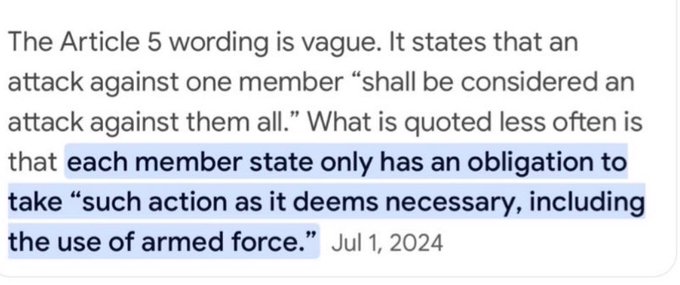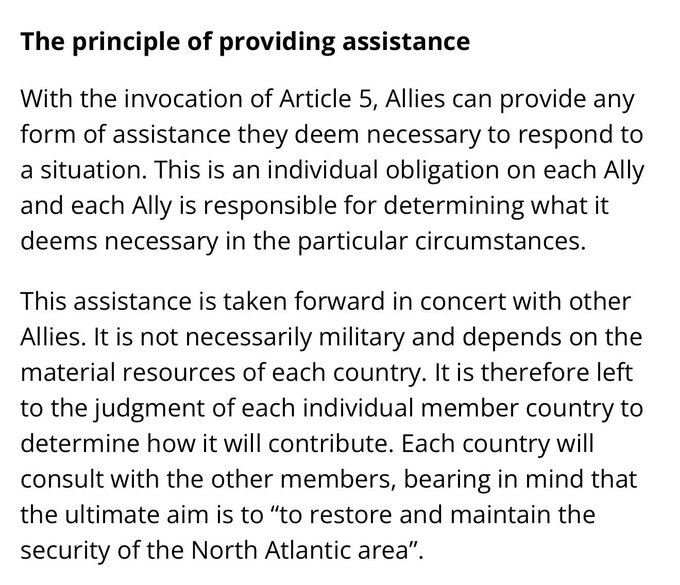Let’s talk the constitutionality of a NATO withdrawal and how that would work.
First, the NATO alliance became a constitutionally ratified treaty in 1949, so the U.S. must comply with its exit clause, which mandates one year’s notice to the participating countries.
The President has the unilateral authority to pull the U.S. out of NATO under his executive powers in Article II, as there is no exit clause formally outlined in Articles I or II.
Historical precedent supports this: George W. Bush withdrew the U.S. from the Anti-Ballistic Missile Treaty in 2002, without Senate approval, citing the treaty’s withdrawal clause.It is not standard practice for the Senate to be involved in the withdrawal process, even though they advise on treaties.
Goldwater v. Carter, 444 U.S. 996 (1979).
Discuss, and vote!
First, the NATO alliance became a constitutionally ratified treaty in 1949, so the U.S. must comply with its exit clause, which mandates one year’s notice to the participating countries.
The President has the unilateral authority to pull the U.S. out of NATO under his executive powers in Article II, as there is no exit clause formally outlined in Articles I or II.
Historical precedent supports this: George W. Bush withdrew the U.S. from the Anti-Ballistic Missile Treaty in 2002, without Senate approval, citing the treaty’s withdrawal clause.It is not standard practice for the Senate to be involved in the withdrawal process, even though they advise on treaties.
Goldwater v. Carter, 444 U.S. 996 (1979).
Discuss, and vote!



